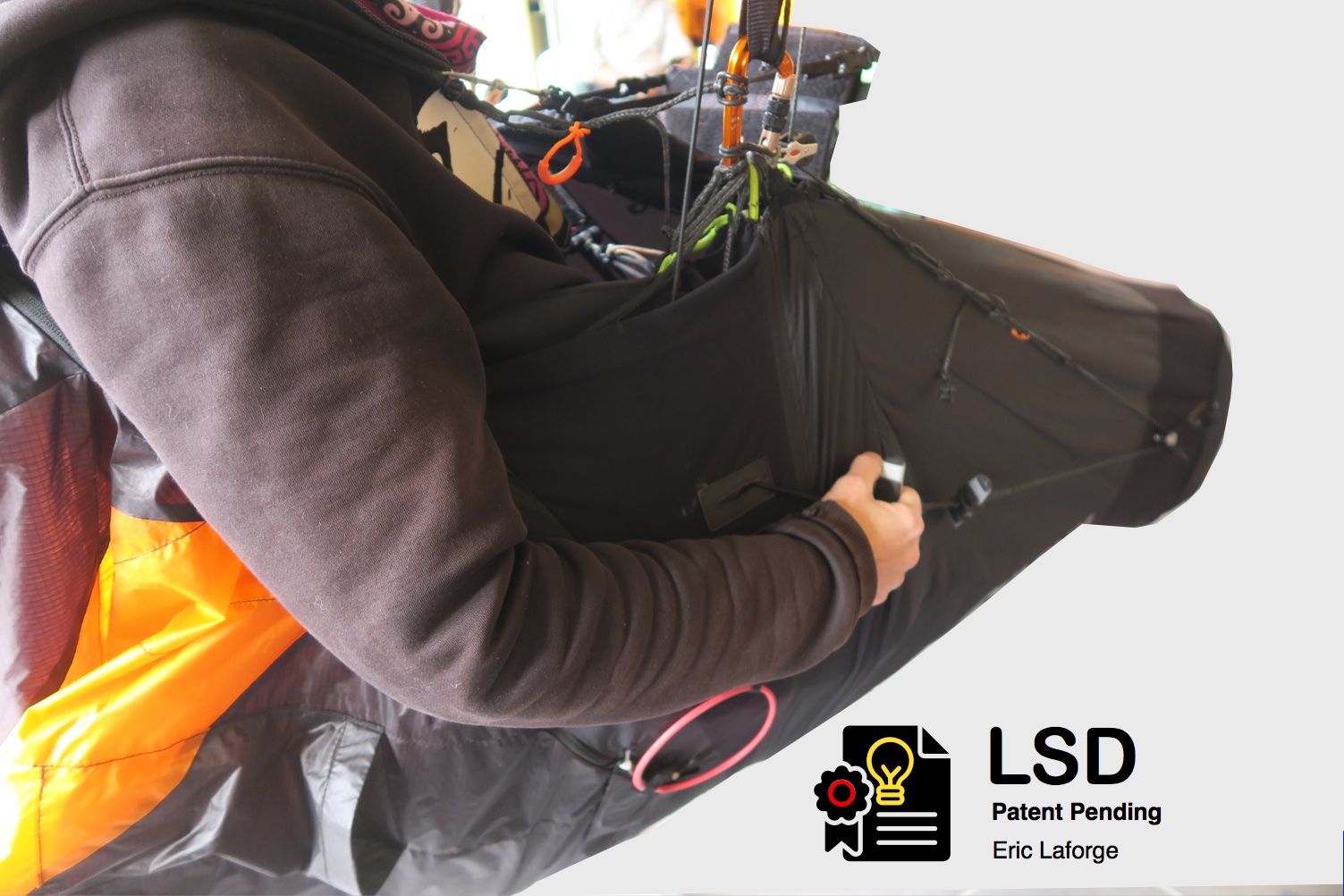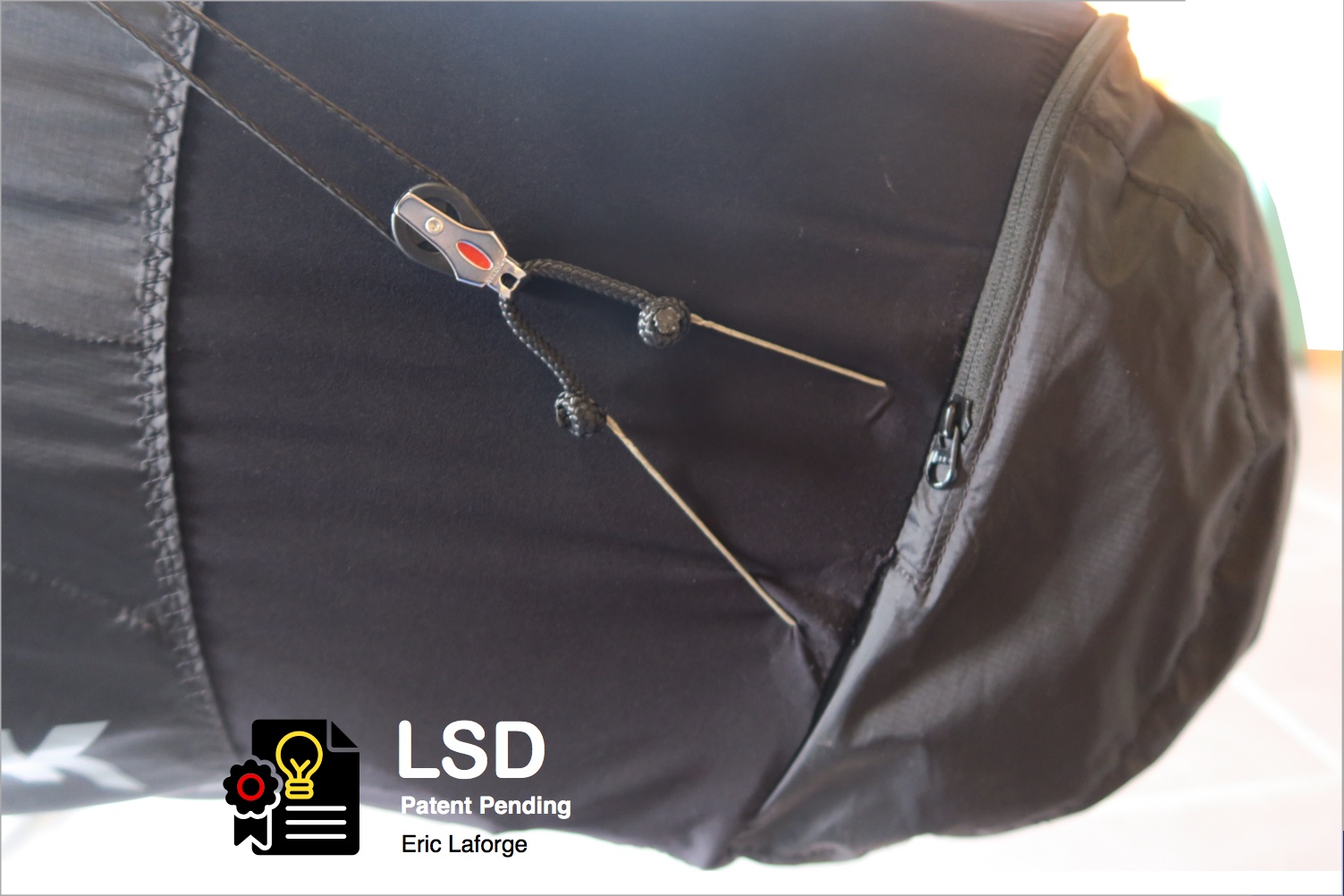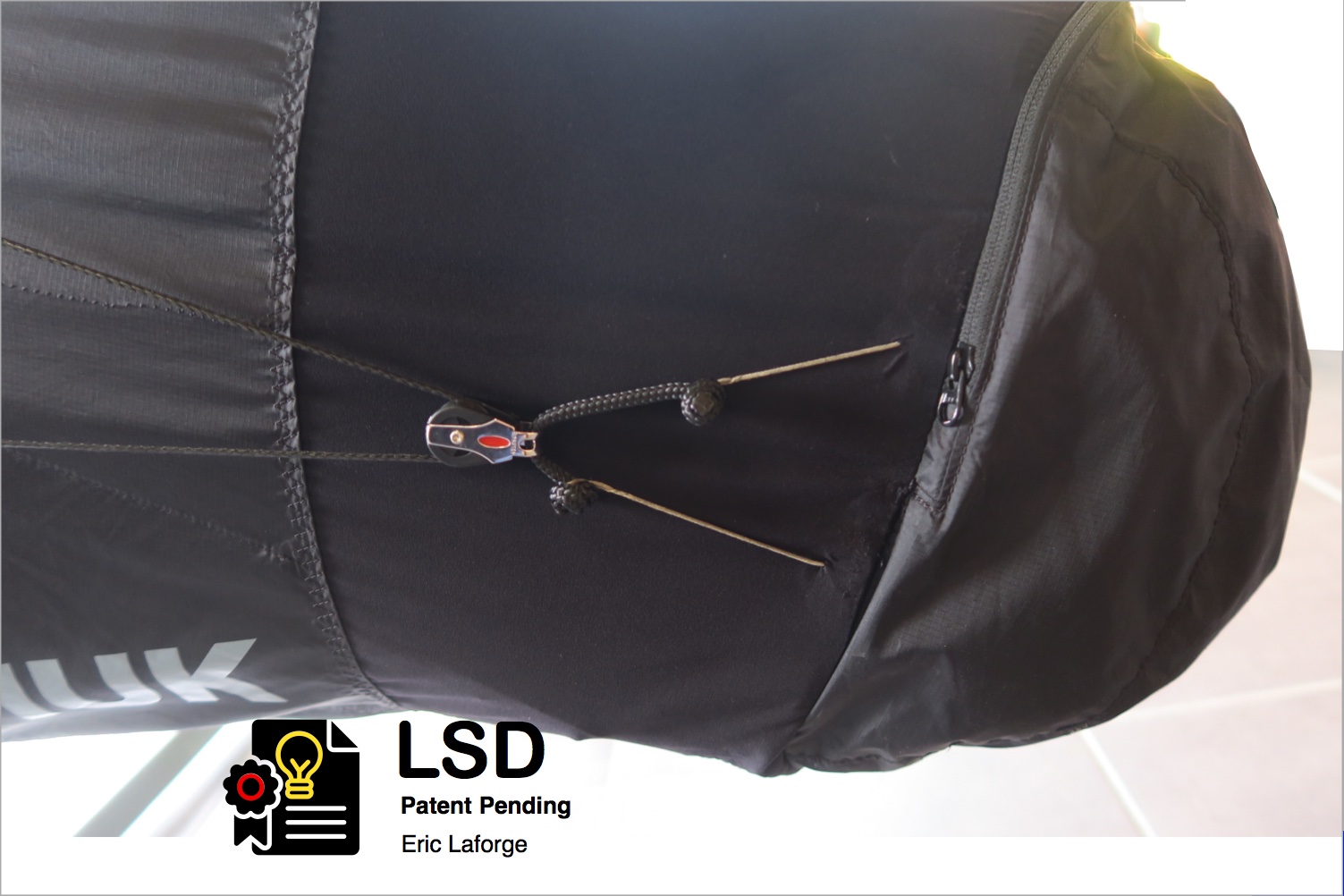Low Steering Device (LSD)

Motivation
Efficiency & Comfort | Flying a paraglider at full speed bar (more than 50 km/h) with arms raised is neither aerodynamic nor comfortable. It creates unnecessary drag and fatigue
Endurance & Circulation | Long flights with arms constantly above the head reduce blood circulation, making the fingers cold. The “high arms” position forces many pilots, including myself, to rely on heated gloves.
Health & Longevity | After more than 40 years of flying, the strain of this posture has taken its toll. Shoulder pain and joint stress have become limiting factors. It’s time to rethink the way we control our wings.
Progress vs. Tradition | Harness aerodynamics have seen major improvements in recent years. Yet, we still fly with arms raised—an outdated method that contradicts the evolution of our equipment.
My Approach | For years, I’ve been thinking about an alternative control system that would allow pilots to fly with hands naturally placed along the thighs, outside the pod !
I decided to move from idea to reality: building my own prototype, adapting it to my personal needs, and testing it in real flights. This project is not just about comfort—it’s about unlocking a new, more natural way of flying.
With this system, I can:
- Reduce fatigue
- Keep my hands warmer without artificial heating
- Minimize drag
- Protect my shoulders for the long term
Usefulness of the Device
Competition: Reduces pilot drag, improving aerodynamics and performance.
Comfort: Allows pilots to lower their arms and rest while still controlling the paraglider.
Warmth: Helps maintain blood circulation in the arms and hands, reducing cold fingers.
Health: A solution for pilots suffering from shoulder pain or strain from long flights.
A Brief History of Paragliding and Its Piloting Methods
1985: Laurent de Kalbermatten invented modern paragliding by replacing elastic parachute fabric with spinnaker fabric, offering precise profiles and stability.
Since the beginning: Braking has remained the same — trailing edge control via brake handles at head level.
Rear Riser Steering: Developed as an alternative or backup. It modifies the wing’s incidence without adding drag. Initially for emergencies, it has become common for straight flight and fine turn control.
But one thing has never changed: the high-arm position for controls — a position that creates drag, fatigue, and health issues.
The Right Direction to Pull
From the start, I wanted a system allowing controls to be used with arms down along the thighs.
Using pulleys at the foot level, the controls are pulled towards oneself — an intuitive movement, identical to classic braking.
Classic brake controls remain fully usable.
During takeoff and landing, pilots still use the normal brakes.
At any moment, they can switch back in a fraction of a second.
An optional elastic keeps the brake handle against the riser when released, improving ergonomics.
Certification maintained
The piloting device does not alter the behavior or certification of the paraglider.
State of development
I presented this system at the 2025 Coupe Icare in Saint-Hilaire du Touvet to manufacturers and journalists. It interests many people. It seems that I am not the only one with shoulder pain… And since raised arms account for 40% of the pilot’s drag, there is a big advantage to adopting the system for performance flight!
I am working on a version easy to install on any cocoon harness and on any paragliding model.
A small test series will be available very soon.
Eric Laforge
October 26, 2025





